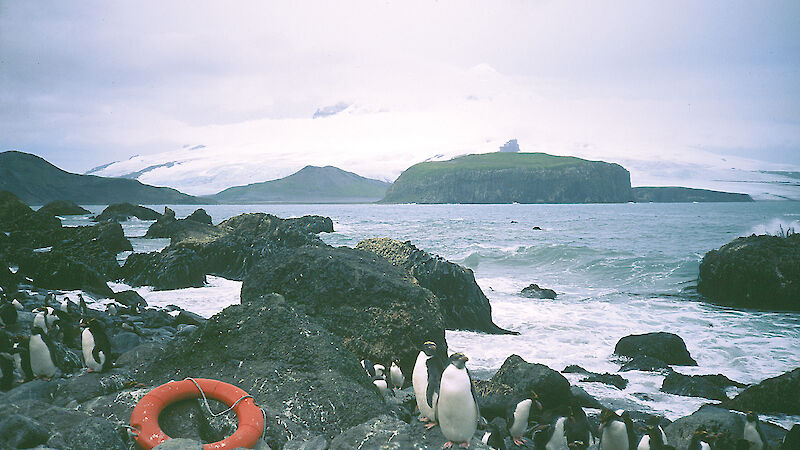The quantity of litter or marine debris in the world’s oceans has been steadily increasing over the years. This is to be expected, as human populations, industrialisation and sea-traffic, especially fishing, increase. The Southern Ocean is the most remote of seas and even here marine debris is making its mark.
Marine debris is composed mostly of plastic. Estimating its distribution and abundance in the Southern Ocean by direct methods is not practical for a number of reasons. First, the Southern Ocean is vast and the surface concentration of debris is very low. For example, a large surface net was towed behind the RSV Aurora Australis for one hundred kilometres, but it caught only surface plankton and a small fragment of seaweed. Second, in the pack-ice zone, such methods are not possible and the ice front and circum-Antarctic currents may act to exclude surface borne materials. The beaches of westward bays (facing the prevailing wind and current direction) of subantarctic islands proved to be the answer.
About 10 years ago studies showed that both Macquarie and Heard Islands had accumulated debris on their beaches. These studies also indicated that the rubbish washed ashore on the two islands was different, and originated from different activities. At that time there was more fisheries litter reaching Heard than Macquarie. Since then the structure of the fisheries has changed.
So how has the beach-washed debris changed, if at all, in these last 10 years? ANARE visits Heard Island infrequently, so the simultaneous visits to both Heard and Macquarie Islands this summer provided the first opportunity in many years to compare the rubbish reaching the two islands. Beaches were searched daily (many of which were surveyed 10 years ago) and the rubbish removed to ensure nothing was counted twice. Weather events, such as storms, were recorded to help determine what influences the amount, distribution and particle-size of the rubbish. By far the greatest component of this litter is plastic. The type and intended use of plastic was determined by analysing its chemical characteristics, and the length of time the material has been in the sea was determined by examining the biological growth and weathering of its surface.
The research confirms that litter is still present in the Southern Ocean and that fisheries are the greatest single source. What is not yet known is whether this is a cause for concern beyond the realisation that the untidy habits of humanity are having their effects even in these most remote of locations. Particles of plastic occur in many carcasses of dead snow petrel chicks found in Antarctica. It is not known whether the plastics contributed to the death of the chicks, how many other Antarctic species are ingesting plastics or whether they are harmful when ingested. Recent research has indicated that small plastic particles may concentrate toxic compounds such as PCBs and pesticides, which could be harmful when ingested. For this reason particular attention is being placed on collecting millimetre-scale plastics on the beaches, in the carcasses of dead seabirds and in the scats of seals. This could explain the occasional high concentrations of these chemicals found previously in some Antarctic species.
Harry Burton and Martin Riddle
Australian Antarctic Division

